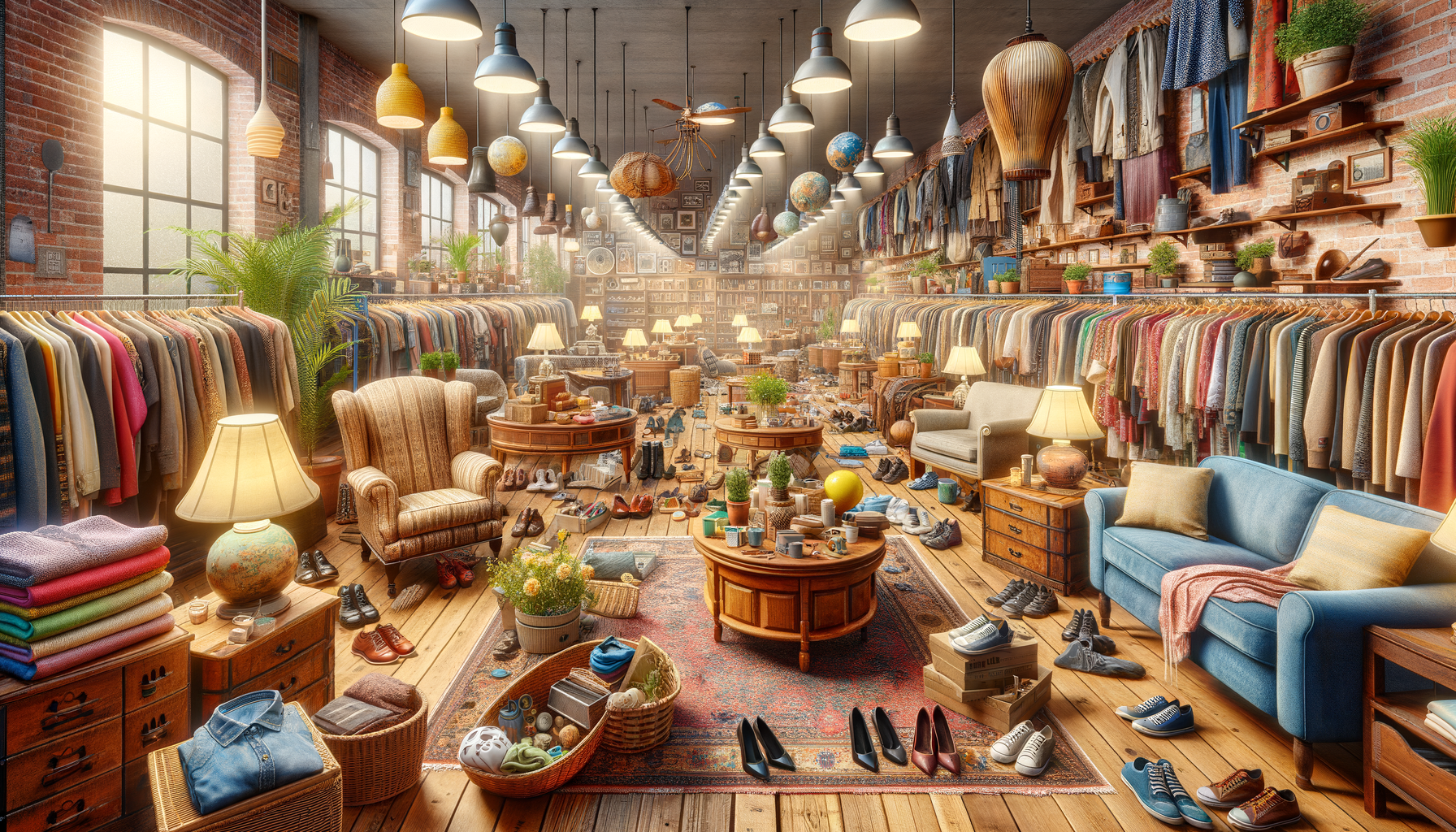
Explore fashion and décor with a sustainable twist
The Rise of Thrift Stores: A Sustainable Shopping Trend
Thrift stores have emerged as a significant player in the retail landscape, offering a sustainable and cost-effective alternative to traditional shopping. As awareness of environmental issues grows, more people are turning to thrift stores to make eco-friendly fashion and home décor choices. These stores not only provide unique and vintage items but also help reduce waste, making them an integral part of the circular economy.
One of the key factors contributing to the popularity of thrift stores is their role in promoting sustainability. By purchasing secondhand goods, consumers can minimize their carbon footprint and reduce the demand for new products, which often require significant resources to produce. This shift towards sustainability is not only beneficial for the environment but also supports local communities by providing affordable shopping options.
Moreover, thrift stores offer an exciting shopping experience that is akin to a treasure hunt. Shoppers can find unique and one-of-a-kind items that are not available in mainstream retail outlets. This element of surprise and the potential to discover hidden gems make thrift shopping an appealing option for many.
Exploring the Unique Appeal of Thrift Stores
Thrift stores are renowned for their eclectic mix of merchandise, ranging from clothing and accessories to furniture and home décor. This diverse selection attracts a wide array of shoppers, from fashion enthusiasts seeking vintage pieces to homeowners looking for distinctive décor items.
One of the most appealing aspects of thrift stores is the opportunity to find high-quality items at a fraction of their original cost. Shoppers can often discover designer clothing, antique furniture, and other valuable items that have been gently used but remain in excellent condition. This affordability makes thrift shopping accessible to a broader audience, allowing individuals to express their personal style without breaking the bank.
Additionally, thrift stores provide a platform for creativity and self-expression. Shoppers can mix and match different styles to create a unique look that reflects their personality. The ability to experiment with fashion and décor without a significant financial investment encourages innovation and fosters a sense of individuality.
Thrift Shopping: A Boon for Local Communities
Thrift stores play a vital role in supporting local communities by providing jobs and generating revenue for charitable organizations. Many thrift stores are operated by non-profit organizations that use the proceeds from sales to fund various community programs and initiatives.
By shopping at thrift stores, consumers can contribute to these causes and support local economies. This sense of community involvement adds an extra layer of satisfaction to the shopping experience, as customers know their purchases are making a positive impact.
Furthermore, thrift stores often partner with local businesses and artisans to promote sustainable practices and support the local economy. These collaborations help create a network of environmentally conscious enterprises that work together to promote sustainability and community development.
Tips for Successful Thrift Shopping
For those new to thrift shopping, the experience can be both exciting and overwhelming. To make the most of your thrift store visits, consider the following tips:
- Be Patient: Thrift shopping requires time and patience. Be prepared to sift through a variety of items to find the perfect piece.
- Visit Regularly: Inventory at thrift stores changes frequently, so regular visits increase your chances of finding unique items.
- Keep an Open Mind: Approach thrift shopping with an open mind and be willing to explore different styles and items.
- Check for Quality: Inspect items carefully for any damage or wear before purchasing.
- Have a Plan: While spontaneity can be fun, having a general idea of what you’re looking for can help focus your search.
By following these tips, shoppers can enhance their thrift store experience and uncover hidden treasures that add value to their wardrobe or home.
The Future of Thrift Stores in a Changing Retail Landscape
As the retail industry continues to evolve, thrift stores are poised to play an increasingly important role in shaping consumer behavior. The growing emphasis on sustainability and ethical consumption is driving more people to explore secondhand shopping as a viable alternative to fast fashion and mass-produced goods.
In response to this demand, many thrift stores are expanding their offerings and incorporating online platforms to reach a wider audience. This digital transformation allows consumers to shop for secondhand items from the comfort of their homes, making thrift shopping more accessible and convenient.
Looking ahead, thrift stores are expected to continue thriving as they adapt to changing consumer preferences and leverage technology to enhance the shopping experience. By embracing innovation and maintaining their commitment to sustainability, thrift stores will remain a valuable resource for consumers seeking quality, affordability, and environmental responsibility.


